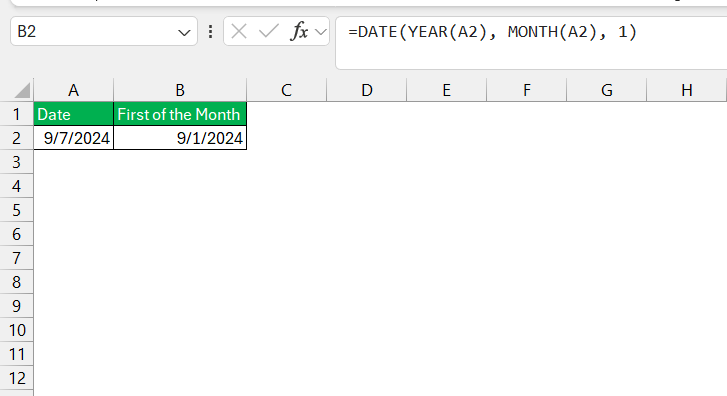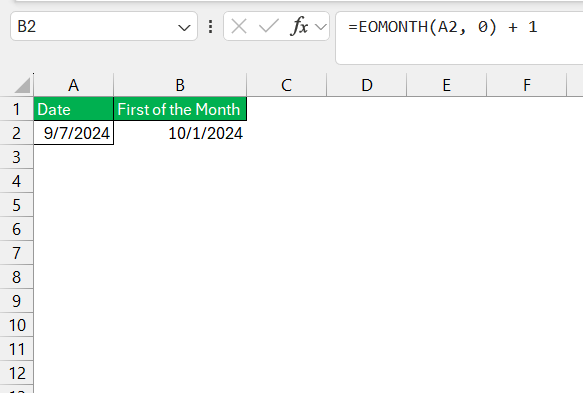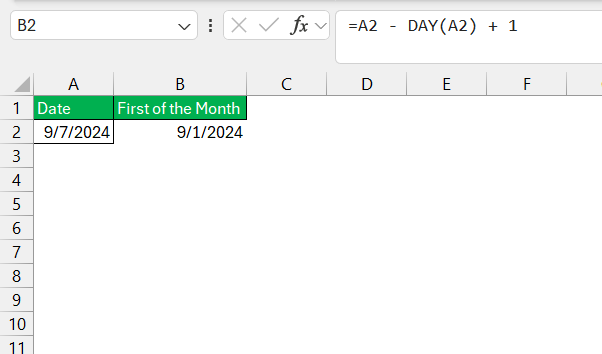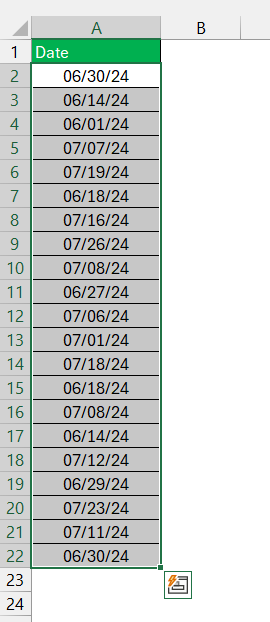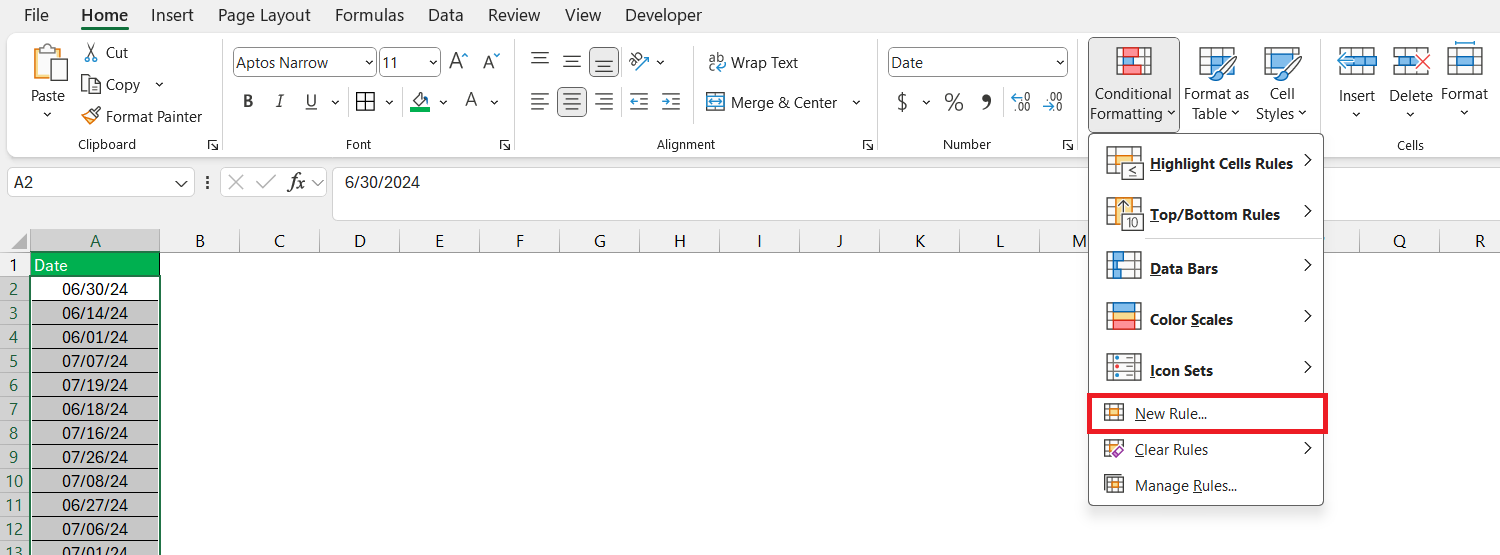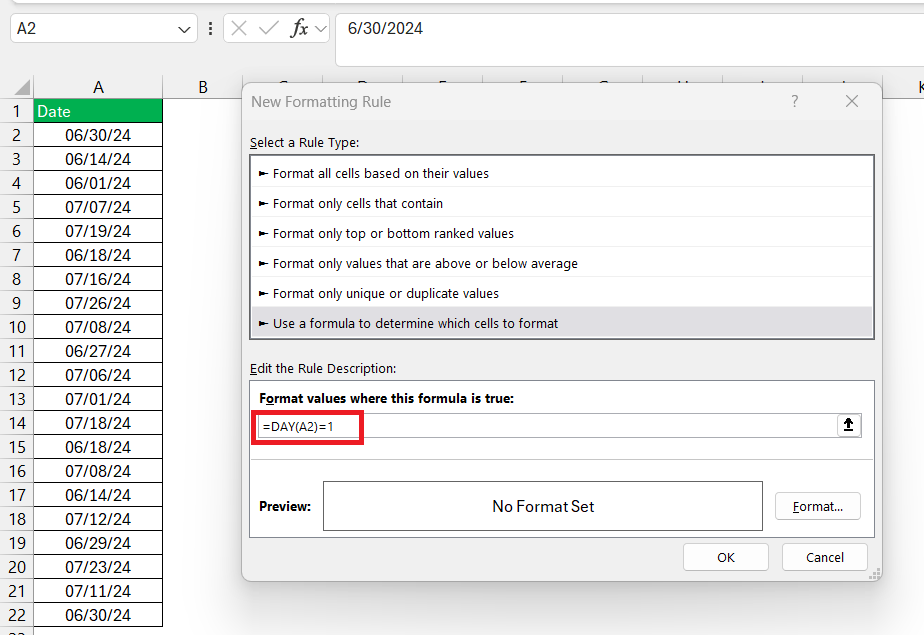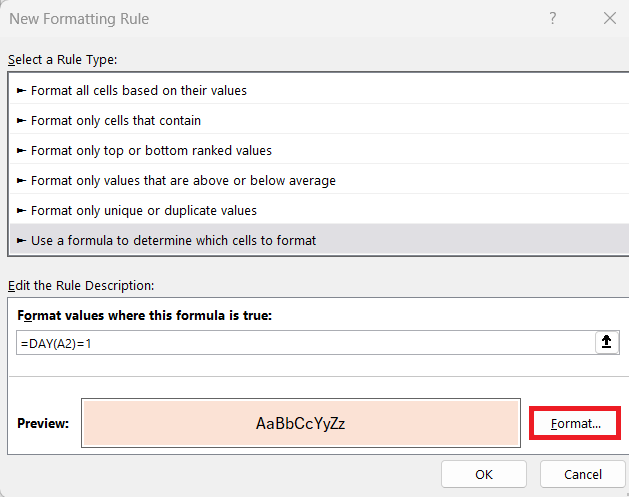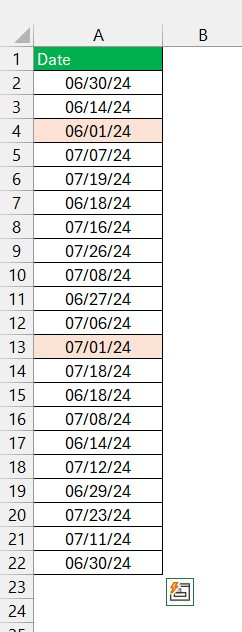In Excel, determining the first of a month can be crucial for managing data such as billing cycles, reports, and scheduling tasks. Whether you’re analyzing trends by month or preparing time-sensitive data, knowing how to extract or calculate the first of the month allows for precise planning. This guide will show you different methods to quickly identify the first day of any month using Excel functions.
Key Takeaways:
- Learn different methods to calculate the first day of the month in Excel.
- Use Excel’s date functions for accurate time-based data management.
- Simplify the process with formulas like
DATE(),EOMONTH(), andDAY(). - Apply these functions for forecasting, scheduling, and reporting.
- Enhance data analysis by organizing information using month start dates.
Table of Contents
Introduction to Manipulating Dates in Excel
The Importance of Date Functions in Excel
As we dive into the fascinating world of Excel, one of the most valuable skills is mastering the art of date manipulation. Dates are the backbone of numerous tasks we undertake – from orchestrating schedules, and monitoring deadlines, to analyzing temporal data trends.
To make sense of time and organize our workflows efficiently, Excel offers a suite of functions crafted to navigate through calendar dates with ease. Understanding how to use these date functions is akin to being a time traveler in your spreadsheets, capable of pinpointing exact moments with precision.
Mastering the Art of Calculating the First of the Month
Mastering the art of pinpointing the first of the month in Excel can give us a significant edge, especially when organizing data or planning ahead. Whether it’s setting up recurring billing cycles, preparing monthly summaries, or creating timeline-based reports, knowing how to calculate this specific date sets the stage for accurate temporal analysis and seamless workflow management.
With Excel, there is more than one path to arrive at this seemingly simple yet critical piece of information. We just need to know which formula fits best in our situational toolkit and how to use it effectively.
Unveiling the Magic Formulas
Traditional Method Using DATE, YEAR, and MONTH Functions
The traditional method to find the first of the month in Excel involves employing a combination of the DATE, YEAR, and MONTH functions. Here’s the beauty of this method – it’s both intuitive and versatile. By using the DATE function, we create a new date from individual year, month, and day components.
For instance, let’s start with a reference date in cell A2. The formula =DATE(YEAR(A2), MONTH(A2), 1) takes the year and month from the reference date and combines them with ‘1’ to represent the first of that month.
This method works flawlessly for any date provided, regardless of the display format, giving us a consistent Gregorian result. It’s like having a time machine that sets you back to the very start of any month.
Not only does this offer a clear understanding of how Excel views dates, but it also introduces flexibility. We can modify the components to generate any date we need – a cornerstone for dynamic date calculations and a must-have in our Excel skillset.
Shortcut with EOMONTH: A Step Ahead
A more streamlined approach for those who love efficiency is leveraging the EOMONTH function. This powerful function takes us a step ahead by simplifying the process even further. Instead of piecing together year, month, and day components, EOMONTH swiftly provides the end of the month date from a given starting point, and with a small twist, it can give us the start of the next month.
The formula to find the first day of the following month looks like this: =EOMONTH(A2, 0) + 1. Here, A2 is where we input our initial date. The ‘0’ indicates we want the end of the current month from A2. By adding ‘1’, Excel magically jumps to the next day, which is the first day of the following month.
Remember that with great power comes great efficiency. Embrace EOMONTH and add it to your arsenal of Excel tricks!
Get First Day of Month Using DAY()
When we’re faced with the task of identifying the first day of a given month using an existing date in Excel, the DAY() function can become our trusted ally. Here’s how it works: by utilizing the formula =A2 - DAY(A2) + 1, we’re directing Excel to perform a simple yet clever operation.
The DAY() function extracts the day component from our date in A2, that is, the number representing its position within the month. Then, we subtract this value from the original date and add 1 to circle back to the very first day of that same month.
This method guarantees that no matter the starting day, we always land on the first with precise consistency – whether it’s the 15th, the 30th, or any other day of the month. It’s an elegant solution for serial date transformations, ensuring we stand on the threshold of each month with confidence.
Practical Applications for Business and Analysis
Forecasting and Financial Planning Using Month Start Dates
When we delve into forecasting and financial planning, the importance of precision with dates cannot be overstated. Starting our analysis or projections right at the commencement of the month ensures that we have a clear, undisturbed view of the period ahead. With Excel, month start dates serve as anchors for creating comprehensive financial models, budget forecasts, cash flow analyses, and setting the groundwork for various reporting cycles.
Using formulas to find the first day of the month, as discussed earlier, aids in aligning data across timeframes seamlessly. This coherence is particularly vital in time-sensitive scenarios like monthly closing processes, quarter reporting, and year-on-year comparisons. By standardizing the start dates, we establish a consistent baseline, which enables a clearer assessment of patterns, trends, and variances.
Override a lack of uniformity in date entries with the robustness of month start dates and watch how simplicity in planning leads to fortitude in execution. Remember, the art of management often lies in establishing order from chaos — and it begins with the basics of calendrical computations.
Organizing Data by Month for Easier Analysis
Organizing data by month is a critical step that streamlines analysis and aids decision-making. With Excel, separating monthly data becomes manageable, allowing patterns and trends to reveal themselves. When we crunch numbers for each month, we trim down volumes of data into digestible slices, permitting a clearer understanding of periodic performance, spotting seasonality, or assessing the impact of monthly promotions or events.
This organization is made simple with date functions. For example, applying the tools mentioned — such as DAY(), DATE(), or EOMONTH() — to transform dates to the first of the month can be paired with features like PivotTables. PivotTables help segregate and summarize data with respect to months while maintaining granularity.
Furthermore, the contribution of this organization is not merely in analysis but also in presentation. When we report findings, showing data sorted by months can make our insights more persuasive, providing a temporal narrative that is often more relateable and actionable.
Whether it’s sales data, web traffic, or any metric over time, applying these date functions elevates our proficiency in managing the monthly mosaic of numbers.
Excel Tips and Tricks
Conditional Formatting Based on First Day of Month
Conditional formatting is a dynamic tool in Excel that amplifies our data visualization capabilities. When we apply conditional formatting based on the first day of the month, our spreadsheets become visually intuitive. This allows us to instantly recognize new month onset within a range of dates, highlight monthly thresholds, or set apart monthly billing cycles with color coding, icons, or data bars.
To apply this, consider using a formula within the conditional formatting rules like =DAY(A1)=1, which would specifically target cells where the day portion of the date is ‘1’, denoting the first day.
Here is how to implement it:
STEP 1: Select the range of dates you wish to format.
STEP 2: Navigate to the ‘Conditional Formatting’ options under the ‘Home’ tab. Choose ‘New Rule’, and then ‘Use a formula to determine which cells to format’.
STEP 3: Input the formula =DAY(A2)=1 adjusting the cell reference to match your selected range’s first cell.
STEP 4: Set the desired formatting options — choose a fill color, font style, or an icon to differentiate these dates.
Confirm the rule, and the formatting will be applied automatically.
Using this kind of visual cue is extraordinarily helpful when scanning through large data sets or when providing reports where date significance must be immediate and evident.
FAQ – Frequently Asked Questions
Q1: How to get the 1st date of month in Excel?
To get the 1st date of the month in Excel, use the formula =A2-DAY(A2)+1 in a cell, where A2 is the cell with the reference date. Press Enter, and the first day of that month will appear.
Q2: How do I round the month in Excel?
To round the month in Excel, you can use the EOMONTH function with the formula =MONTH(EOMONTH(cell_reference, (DAY(cell_reference)>15)+0)) where cell_reference is the cell containing the date you wish to round. This rounds the date up to the first day of the next month if the day is after the 15th.
Q3: How do I get the start and end of the month in Excel?
To get the start of the month, use =DATE(YEAR(cell), MONTH(cell), 1). For the end of the month, use =EOMONTH(cell, 0). Replace “cell” with the cell reference of the date you are working with.
Q4: What is the Eomonth function in Excel?
The EOMONTH function in Excel calculates the last day of the month based on a given date and a specified number of months before or after. It’s used in the formula =EOMONTH(start_date, months).
Q5: How do I get the start and end of the month in Excel?
To get the start of the month, input =DATE(YEAR(cell), MONTH(cell), 1). For the end of the month, use =EOMONTH(cell, 0) in a cell, where ‘cell’ is your date cell. Press Enter after both formulas for the start and end dates.
John Michaloudis is a former accountant and finance analyst at General Electric, a Microsoft MVP since 2020, an Amazon #1 bestselling author of 4 Microsoft Excel books and teacher of Microsoft Excel & Office over at his flagship MyExcelOnline Academy Online Course.

